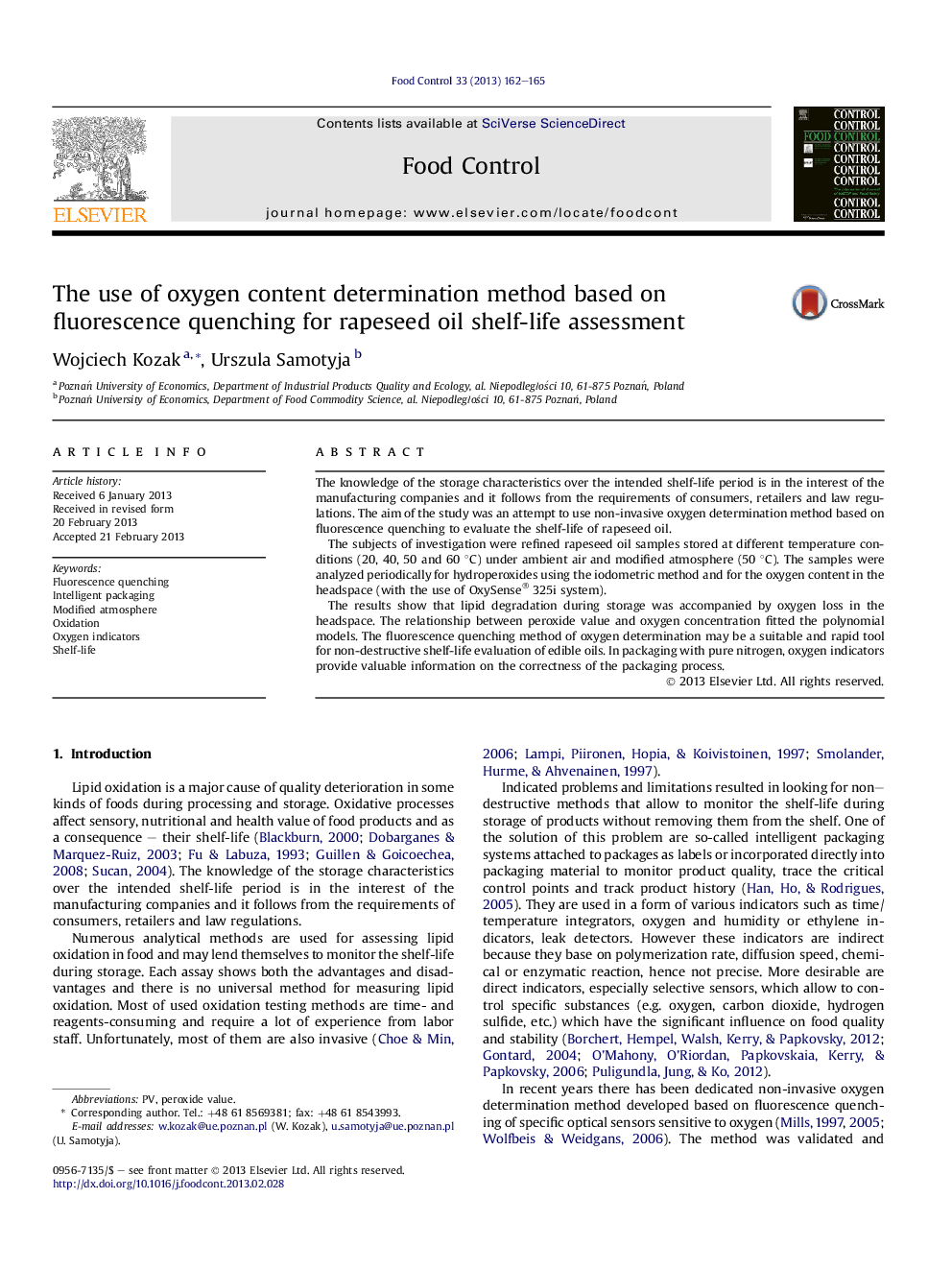| Article ID | Journal | Published Year | Pages | File Type |
|---|---|---|---|---|
| 6392497 | Food Control | 2013 | 4 Pages |
The knowledge of the storage characteristics over the intended shelf-life period is in the interest of the manufacturing companies and it follows from the requirements of consumers, retailers and law regulations. The aim of the study was an attempt to use non-invasive oxygen determination method based on fluorescence quenching to evaluate the shelf-life of rapeseed oil.The subjects of investigation were refined rapeseed oil samples stored at different temperature conditions (20, 40, 50 and 60 °C) under ambient air and modified atmosphere (50 °C). The samples were analyzed periodically for hydroperoxides using the iodometric method and for the oxygen content in the headspace (with the use of OxySense® 325i system).The results show that lipid degradation during storage was accompanied by oxygen loss in the headspace. The relationship between peroxide value and oxygen concentration fitted the polynomial models. The fluorescence quenching method of oxygen determination may be a suitable and rapid tool for non-destructive shelf-life evaluation of edible oils. In packaging with pure nitrogen, oxygen indicators provide valuable information on the correctness of the packaging process.
⺠Lipid degradation during storage was accompanied by oxygen loss in the oil's headspace. ⺠The relationship between hydroperoxides and headspace oxygen fits the polynomial model. ⺠The fluorescence quenching method may be a suitable tool for non-invasive shelf-life evaluation. âºÂ Oxygen indicators provide valuable information on the correctness of the packaging process.
